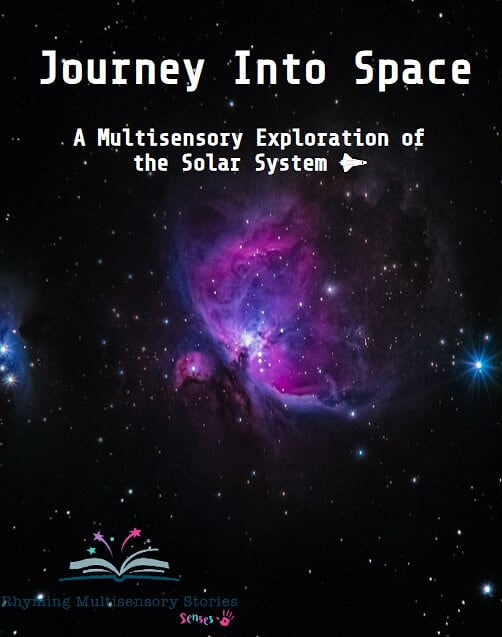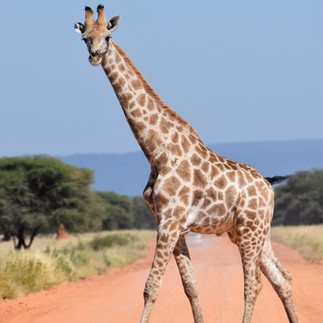May Teaching Calendar
- Rhyming Multisensory Stories
- Apr 28
- 11 min read
Updated: Nov 21

Teaching ideas and activities to celebrate the month of May including VE Day, Vesak, World Bee Day, Hedgehog Awareness Day, Whitsun, National Sun Awareness Week and more!
Featured
May 2 Space Day
May 4-10 Hedgehog Awareness Week
May 5 African World Heritage Day
May 8 VE Day
May 10 World Migratory Bird Day
May 12 Vesak Day
May 12 Florence Nightingale's Birthday
May 12-18 Sun Awareness Week
May 20 World Bee Day
National Walking Month
National Share a Story Month
National Smile Month
This Day in Sensory History:
May 24 1844 The first Morse Code Message was sent.
The April Sensory Garden
Plant fast-growing seeds; cress, carrots, peas, and sunflowers.
Sow wildflower seeds.
Pick dandelions, daisies, leaves and buttercups and make a May Day crown.
Join National Children's Gardening Week (May 24 –June 1).
Tidy and pull up any weeds.
What to Look for in Nature
Flora and Fauna
Comfrey, beech, dandelion leaves, gorse, hawthorn tips, marigolds, primulas, violets, wild garlic, wood sorrel.
The April Kitchen
Asparagus, peas, radish, cauliflower, lettuce, sping onions, spinach, spring greens, chives and parsley.
What to Look for in Nature
Mayflies, ducklings, cygnets, moorhens.
Bird of the Month: Nightingale
A small songbird with its powerful, melodious song often heard at night and celebrated in literature and folklore for its enchanting, flute-like notes.
Listen to a recording of a nightingale
Re-create the birdsong by playing a flutes or recorders.
Explore feathers; brown for the body, a red tail and cream belly and chest.
May 2 - Space Day
Get creative with this constellation art activity.

...or explore moon dust.

Moon Dust Recipe
You will need
8 Tablespoons of Cornflour
1 Tablespoon of Vegetable Oil
Vanilla Essence
Method
Ratio 8:1
Combine the vegetable oil and cornflour until you reach a powdered yet mouldable texture.
Option to add flavoured essence to stimulate the senses.
Press the footprint of a shoe to spark curiosity (the astronaut's footprint)
Suggested Resource
£3.98
'Mars has red rocks and a bright red sky,
the volcanoes reach my rocket they are so high
This planet is cold, at night, minus 80 degrees
If I stay here much longer, I'm going to freeze!'
Table of Contents
Buckle Up!
Story Props Checklist
How to Tell a Multisensory Story
Journey Into Space A Multisensory Story
Developing Comprehension & Understanding
Story Map
Space Sounds (Listening Game)
How to Make a Space Themed Sensory Bag
How to Make a Space Themed Sensory Bin
Space Relaxation – A Guided Relaxation Space Adventure!
Create an Astronaut Role Play Area
Galaxy Art
The Space Lab
Space Design & Technology
May 4-10 Hedgehog Awareness Week
Build Understanding of Animal Habitats and Develop Creative Thinking Through the Use of Different Materials
Hedgerows are a hedgehog's natural habitat, and our gardens also make a good habitat.
Explore a Hedge
Mark a section 1m x 1m and count how many species of plants you can find in that area.
Make a Hedgehog Habitat
Layer a container (tuff-tray or cardboard box) with fern/bracken, dried grass, straw, and leaves. (Alternatively, find a patch in an outdoor area amongst shrubbery, or in leaf/wood piles) Hedgehogs roll the leaves and grass into balls, can the student roll the leaves and grasses into balls?
Explore Hedgehog Food
A hedgehog's main diet consists of beetles, along with caterpillars and earthworms. Head outdoors. Lift plant pots, stones and logs and see if you can find any of these insects. Use a magnifying glass to see more detail
Make a Hedgehog Sensory Box

Line a shoebox with leaves (I used vine leaves, rosemary leaves, curry leaves and bay leaves for an extra sensory element)
Add a SSCD with a recording of a hedgehog snuffle.
Add hedgehogs (Spiky pom poms, pinecones and a nail brush represent the spikiness of a hedgehog or make hedgehogs by rolling Playdoh into a ball then create the spikes using dried spaghetti)

Simplify
Place a few items in the box for sensory exploration.
Remove the items the student doesn't interact with, replace them with other items.
Keep changing the items to keep the activity interesting and motivating
May 12-18 National Sun Awareness Week

Create a Sensory Sun
Class teacher Vicky Ormerod-Jordan explains how the Sparrow Class Hebden Green School in Winsford, Cheshire, celebrated the sun!
'We danced with a yellow stretchy band which is the centre of our sun.
We added oranges and lemons, having smelt, touched, and tasted them.
We explored sweetcorn, peeling off the leaves.
We smelt yellow marigolds and added them to the sun centre.
We bounced, tennis balls and rolled them down a ramp.
We enjoyed a song I wrote called 'The Sun will Shine,' where we shone a torch on various body parts.
The best part of the picture was making hand and footprints in yellow paint for the sun's rays. Very messy!'
Thank you to Vicky, the team, and the students.
Other Ideas
Discuss the importance of staying safe in the sun (link to skin cancer Awareness Month)
Make a sun safety box and place sun protection items inside for exploration
Sunscreen
Hats
Sunglasses
Protective clothing (round neck cotton t-shirts)
Bottle of water
Sunshade
Extend Learning
Can the students tell you what the items are used for how they protect you from the sun?
Click below to view to gallery to see more of the Sparrow's sun themed sensory activities taken from 'Summer - A Multisensory Exploration' £3.98
May 5
African World Heritage Day
Celebrate of the culture of the Continent of Africa. Explore the importance of Africa and its vulnerability due to climate change and poaching.
Explore animal 'skins'
This presents an opportunity for students to explore and express their likes, dislikes and sensory preferences and can help in everyday life such as clothing.
- Faux fur
- Faux leather (fake leather belts, handbags)
- Fabric craft feathers
- Faux suede
Extend Learning
Animal Match Game
Print out an African Animals picture grid (see example below)
Print and cut out the animal skin patterns below.
Can the students match the animal pattern to the animal?
May 8 VE Day
Capture the celebration of VE Day, reflect on the sacrifices, memory, and legacy of those involved in World War II and explore daily life in Britain during the war with this VE Day sensory story.
Includes over 50 VE Day grab and go activity ideas linking to areas of the curriculum for sensory learners of all ages; re-create an air raid, cook wartime recipes using rations, 'Dig for Victory', dress up and organise a street party, role-play an evacuation, explore a soldier's backpack, join the war cabinet and become a code breaker, make Picasso's Dove of Peace and more! Includes a bonus Anne Frank Sensory Story.
Activity: Explore a Soldier's Backpack
Soldiers' backpacks in WWII were designed to carry essential gear like rations, ammunition, medical supplies, water, and personal items. They were often made of canvas with adjustable leather straps. The backpacks were heavy, weighing between 30 to 50 pounds making long marches and battle eld conditions even more challenging.
Place items into a backpack for sensory exploration: blanket, compass, clothes: poncho, socks, undershirt, first aid kit: antiseptic wipes, bandages, sterile gauze, tape, tweezers, flashlight, gas mask, letters from home, metal spoon, photo of loved ones, rations: canned food, biscuits, crackers, chocolate, instant coffee, sugar, water canteen.
Invite the sensory explorer to wear the backpack.
Build Functional Language skills
Can the sensory explorer name the item?
Can the sensory explorer tell or show you how you use the item?
Extend Learning
Place 'red herrings' in a pile of soldier's backpack items, things you would not take to war e.g., compact disc, plastic spoon, (standard issue was metal),LED tealight, plastic water bottle (not used commercially until 1947), phone charger, salad tongs.
Can the sensory explorer tell you why? e.g., CD's were not invented!
May 10th - World Migratory Bird Day
Raise awareness for the conservation of birds and their habitats.
Explore a Variety of Different Shapes, Sizes and Colours of Feathers
Feed the Birds: Birds need to prepare for migration by eating food.
Bird Song Sound Bingo
Print out a picture card with the pictures of migratory birds: Cuckoo, Dove, Goose, Flamingo, Heron, Hummingbird, Starling.
Play the sound effect of the birdsong/call
Can the student identify the bird that makes that sound?
The students may not know all the sounds, so this is a good exercise in listening to new sounds. You can repeat the activity later in the day (week) and see if the student(s) remember any new sounds they have learnt.
Simplify the Activity
Although not all of these birds are not migratory, this activity will teach sound discrimination.
Make a Bird Nesting Material Feeder
You will need
Wire Bird Feeder/Suet Cage
Materials for Nesting: Cotton Wool, Feathers, Fluff, Grass Clippings, Dried Grasses, Hair, Leaves, Moss, Mud, Pine Needles, Plant Stems, Shredded Paper, Sticks, Straw, String*, Wool* and Yarn*. *Use only natural fibres (not plastic or acrylic.)
Activity
1. Ensure the nesting materials are broken/cut into small pieces/lengths as they are a potential choking hazard for birds.
2. Mix the materials.
3. Loosely push the nesting materials into the bird feeder (option to open the top to create a wider opening) Hand the feeder in a place safe from predators.
May 12th
Vesak Day/Buddha Day
Vesak is the celebration of the life and teachings of Gautama Buddha, the founder of Buddhism.
Mark the Day the Sensory Way
Meditate: Dim the lights in the room and close the blinds, switch on an LED candle or play footage of a candle burning on your interactive whiteboard.
People traditionally wear white clothes.
Explore white clothes or white fabrics
Provide a selection of white fabrics of different textures for the student to explore their likes, dislikes and sensory preferences: Acrylic, Aertex, Chenille, Corduroy, Cotton, Crepe, Crinoline, Fake Fur, Felt, Flannel, Fleece, Hessian, Jersey, Lace, Linen, Mesh, Net, Percale, Polyester, Polycotton, Satin, Silk, Terry, Velour, Velvet, Viscose, Wool.
Family & Friends decorate temples with flowers and exchange cards.
Make a Vesak Day Flower Card
You will need
A piece of card
Double sided tape
Daisies and dandelions

Activity
Cover one side of the card with double-sided sticky tape or a layer of PVA glue (if using PVA, leave until it is almost dry but tacky enough to stick the flowers and grass on.
Take the learning outdoors
Show the students the flowers and grasses that are safe to pick (dandelions and daisies)
Invite the students to pick the flowers then stick them onto their card.
Option to place a photo of the student on the card.
Hands Free Alternative
Cut a wide band of card and secure into a bracelet
Apply a thin layer of PVA glue or cover one side of the card with double-sided sticky tape
Place the band on the student's wrist.
The student will have both hands free to explore, pick and place their items onto their band
May 12th
Florence Nightingale's Birthday
Explore the contents of a first aid bag/box
This activity will raise awareness of the contents of a first aid box* and reduce the anxiety some students may have around first aid.
*I have included extra items that may not be in your box
Sterile plasters of assorted sizes
Large and medium-sized sterile, individually wrapped, unmedicated wound dressings
Sterile eye pads
Triangular bandage
Disposable gloves
Foil Blanket
Sterile wound wipes
Finger dressing
Burns gel dressings
Adhesive tape to secure dressings
An updated first aid guidance leaflet.
Practice simple first aid; bandaging "wounds", wrapping foil blankets around casualties, taking pulses and listening to breathing. Gently press the 'patient's' nail and notice how the colour changes from pink to white, see how quickly the colour changes, the quicker the better the circulation. Assess level of consciousness by speaking to casualty; Encourage participants to swap roles between being patients and medics. ‘Hello are you ok? Can you hear me?’ ‘What is your injury?’
Discuss how to raise the alarm in an emergency.
May 20th
World Bee Day
A day to appreciate and raise awareness of bees.

National Smile Month
The aim is to make someone smile. This could be through a compliment, telling a joke or an act of kindness.
Explore Mirrors Exploring mirrors teaching an awareness of your own reflection and how we convey emotion. (Point out safety when using mirrors) Explore a range of different shaped, sized and colours of mirrors.
Pull funny faces
Model wearing hats, wigs, glasses, and clothes so the student can change their look. Encourage the student to observe how their mouth changes shape as they talk.
Draw funny faces on balloons.
Smile:)
May 24th 1844
On this Day the First Morse Code Message was Sent
Dots and Dashes Artwork
Create artwork using different tools and materials to make dots and dashes
Dots: Bingo dabbers, cotton wool bud, fingerprints, paint brushes, pipettes, pom poms, sponges, stickers, vegetable printing, paint bubble wrap
Dashes: Chopsticks, cinnamon sticks, dried spaghetti, feather quill, pipe cleaners, rollers, roll balls/toy cars through paint, ribbon, rubber bands, straws, string
Other ideas:
Spray paint through card templates/stencils
Colour through the hole in an old cd
Play dot-to-dot
This Month is National Walking Month

Enjoy a listening walk outdoors.
Enjoy a listening walk around your school/setting.
Make a sensory pathway. Use different textured materials and natural items to form a pathway (sand/gravel/carpet/water/leaves/wood/foam etc) Would the students like to walk barefoot to stimulate their senses?
Share a Story Month
For me, the best part of storytelling is the bond shared between the storyteller and story explorer as you share your adventures.
For anyone new to multisensory storytelling you can watch free training videos here:
The videos will talk you through how to source story props and using the props/resources as a tool to promote communication skills, independence, areas of learning and for students to explore and express their likes, dislikes and sensory preferences providing opportunities for them to make choices and rejections.
There are FREE stories to download here
Other Resources
Join your favourite fictional book characters and explore the world of non-fiction with this fully resourced, step-by-step sensory story perfect for celebrating Share a Story Month, World Book Day, World Poetry Day, International Literacy Day, National Library Week and other book festivals and awareness days. Includes 70 Plus activity idea for sensory learners of all ages and ideas for students extending their learning.
Other Titles in this Series
Fully resourced, step-by-step multisensory stories linking individuals to literature, culture, history & topic through the senses.
Each resource includes themed, sensory activities aimed at promoting communication skills, independence, and areas of learning.
Full List of Titles
Seasons
Spring
Summer
Autumn
Winter
A Winter Walk
January Through the Senses
The Weather
Culture & Celebrations
A Train Ride Through India
Book Day
Bonfire Night
Burns Night
Chinese New Year
Diwali
Halloween
Harvest Festival
Holi
Harvest Festival
The Witch
Life Skills, Self Care, Routines and Transitions
Back to School
Jobs and Work Experience
People Who Help Us – The Special School Superheroes
The Dentist
Washing Hands
RE
Sensory Saints
St Patrick’s Day
Maths
Shapes – A Multisensory Exploration
Topics and Themes
Airports and Airplanes
Elephants
Journey into Space
Minibeasts
The Beach
The Farm
The Rainforest
History
Benjamin Franklin
The King’s Coronation
The Queens Jubilee
The Great Fire of London
The Romans
VE Day
Reference
Listen – An A-Z of Sensory Inspiration to Stiumlate the Auditory System
Sensory Resources for Sensory Learners (800+ Ideas)
Christmas
Dear Santa (Includes How to Adapt into a Play)
Rudolph’s Carrots
Traditional Tales
Goldilocks and the Three Bears
Jack and the Beanstalk
Little Red Riding Hood
The Gingerbread Man
The Three Little Pigs
Buy Direct £3.50 (email rhymingmultisensorystories@outlook.com)
Visit the shop £3.98

Download the Latest Catalogue

Workshops

Pricelist
1-1
£45
Private Group Workshop
£99
Whole school/setting INSET
£199
Includes a free 6-month subscription to the Members Library
Get in Touch!
Your questions, queries, comments & feedback are always welcome!
Website: www.rhymingmultisensorystories.com
Facebook Page: Rhyming Multisensory Stories
Facebook: Victoria Navin RMSS
Twitter: @RhymingStories
Instagram: rhyming_multisensory_stories
MySpace: Rhyming Multisensory Stories
Tumblr: rhymingmultisensorystories
Reddit: sensorystories
Pinterest: Rhyming Multisensory Stories
YouTube: Rhyming Multisensory Stories
The Health & Safety Bit!
Please Read Before Engaging in any Activities

Health & Safety Advice & Disclaimer
Please Read Before Engaging in Any Activities
The author has taken care in preparing the information provided on this website. However, no representation or warranty is made regarding the accuracy, applicability, fitness, or completeness of the content.
All information is intended for pleasure and educational purposes only.
If you choose to apply any ideas or activities described in this blog, on the website, or within any multisensory stories or resources, you do so entirely at your own discretion and assume full responsibility for your actions.
Supervision
All activities must be led and supervised by a responsible adult at all times.
The sensory explorer should be invited to participate freely, without expectation.
Never force engagement. Stop immediately if the person shows signs of discomfort or lack of enjoyment.
Allergies & Intolerances
If you have any doubts about an activity or prop, seek professional advice before starting.
Always check ingredients and materials for potential food, skin, or respiratory allergies.
Watch carefully for any signs of reaction (e.g., redness, swelling, breathing difficulties). If symptoms occur, seek immediate medical advice.
Safety Considerations
Be aware of potential choking hazards with small items or props.
Ensure all materials are safe, age-appropriate, and suitable for the individual’s needs.
Activities should be adapted thoughtfully to respect the sensory explorer’s comfort, dignity, and wellbeing.
Your questions, queries, comments, and feedback are always welcome!
Contact me via email
send me a message via social media:)
Find me on


























































Comments